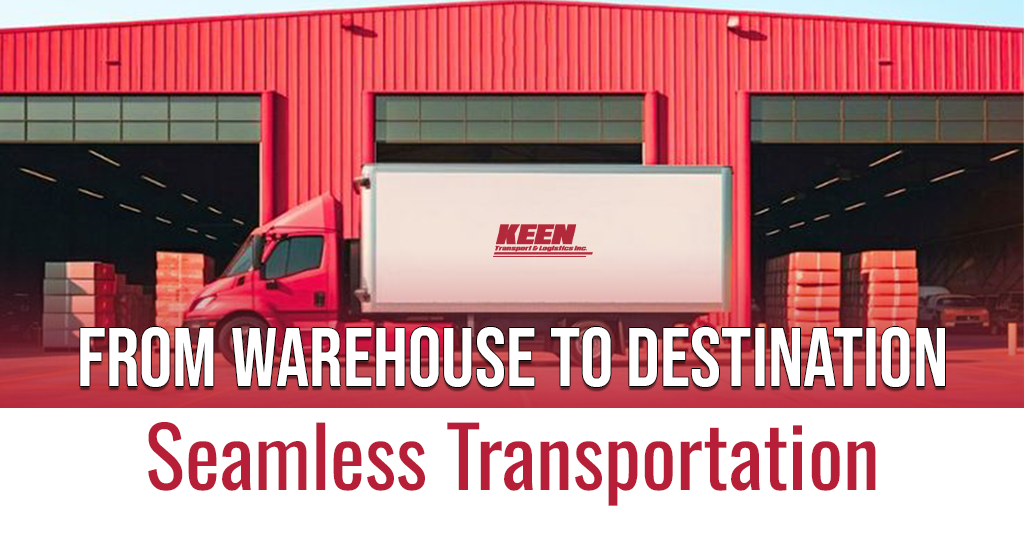In the fast-paced world of logistics, ensuring a smooth journey for goods from warehouse to destination is crucial for maintaining customer satisfaction and operational efficiency. Seamless transportation isn’t just about moving products—it’s about creating a streamlined process that minimizes delays, optimizes costs, and guarantees reliable delivery. Here’s an expert look at how businesses can achieve flawless transportation operations.
1. Integrating Technology for Enhanced Coordination
Modern transportation relies heavily on technology to synchronize various elements of the supply chain. Key technological advancements include:
- Real-Time Tracking: GPS and IoT solutions provide constant visibility into shipment locations, enabling proactive management of delays.
- Automated Route Planning: AI-powered tools optimize delivery routes for time and cost efficiency.
- Data Analytics: Predictive analytics helps anticipate challenges, improve delivery times, and refine operations.
Technology integration reduces errors, enhances transparency, and ensures that every step of the journey is accounted for.
2. Selecting Reliable Transportation Partners
Collaborating with dependable carriers and logistics providers is essential for seamless delivery. Factors to consider when choosing partners include:
- Fleet Diversity: Access to a range of vehicles for specialized requirements such as refrigerated goods or oversized cargo.
- Proven Track Record: A history of on-time deliveries and reliable service.
- Flexibility: The ability to adapt to sudden changes or unexpected demands.
Building strong partnerships ensures consistency and fosters trust throughout the supply chain.
3. Prioritizing Last-Mile Delivery Excellence
The final leg of the delivery process is often the most challenging and critical. To excel in last-mile logistics:
- Leverage Local Expertise: Partner with providers who understand the local landscape and regulations.
- Offer Flexible Options: Enable customers to choose preferred delivery windows or locations.
- Invest in Technology: Use real-time notifications and delivery tracking to enhance customer confidence.
Efficient last-mile delivery transforms logistical precision into customer satisfaction.
4. Sustainability in Transportation
As environmental concerns grow, integrating sustainability into transportation is no longer optional. Businesses can adopt practices such as:
- Eco-Friendly Vehicles: Incorporating electric or hybrid trucks into fleets.
- Optimized Routing: Reducing mileage and emissions with smarter route planning.
- Sustainable Packaging: Minimizing waste with recyclable or reusable materials.
Sustainable logistics not only benefit the planet but also appeal to eco-conscious consumers.
5. Customizing Solutions for Diverse Needs
No two businesses are alike, and transportation solutions must reflect that diversity. Customization options include:
- Special Handling Services: Catering to fragile, high-value, or hazardous goods.
- Scalable Solutions: Adjusting capacity to accommodate seasonal or growth-related demands.
- Specialized Storage: Offering temperature-controlled environments or secure areas for sensitive cargo.
Tailored solutions ensure that unique requirements are met without compromising efficiency.
6. Streamlining the End-to-End Process
Seamless transportation depends on optimizing the entire journey, from warehousing to delivery. Strategies include:
- Cross-Docking: Reducing storage time by directly transferring goods between vehicles.
- Advanced Inventory Management: Leveraging technology to maintain accurate stock levels and minimize delays.
- Collaborative Planning: Coordinating with suppliers and distributors to align schedules and prevent bottlenecks.
Efficient processes ensure that goods move swiftly and reliably through the supply chain.
Conclusion
From warehouse to destination, every step in the transportation process plays a pivotal role in business success. By embracing technology, fostering reliable partnerships, prioritizing sustainability, and customizing solutions, businesses can achieve seamless transportation that enhances customer trust and operational excellence. A commitment to optimizing logistics not only ensures smooth operations but also paves the way for long-term growth in a competitive market.

